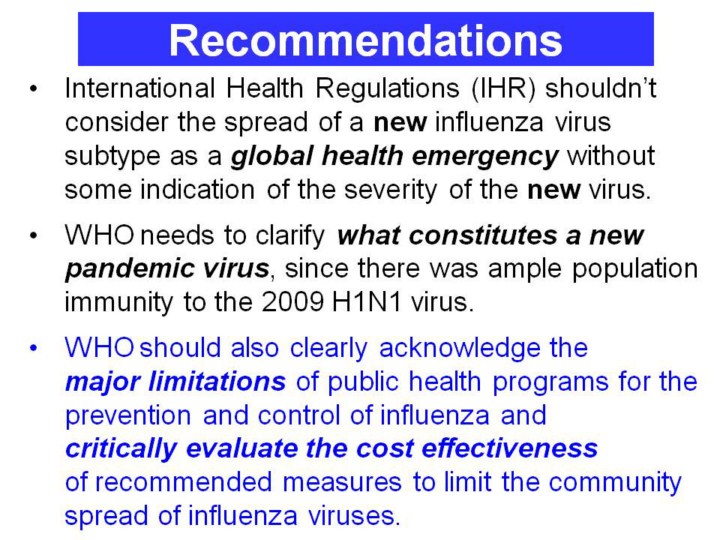| front |1 |2 |3 |4 |5 |6 |7 |8 |9 |10 |11 |12 |13 |14 |15 |16 |17 |18 |19 |20 |21 |22 |23 |24 |25 |26 |review |
 |
These recommendations are made based on the experiences derived from the 1976 swine flu scare and the 2009 H1N1 “pandemic”. An integral part of WHO’s 2005 definition of an influenza pandemic is that “a new influenza virus appears against which the human population has no immunity”! It is now quite clear that there was ample immunity to the 2009 H1N1 virus in the population 10 years age and older, and the very low influenza mortality rate (IMR) in the 65+ population was primarily due to antibodies to H1N1 viruses acquired by the elderly population from numerous H1N1 influenza viruses that circulated in past decades. Thus, the 2009 H1N1 virus did not fit WHO’s 2005 definition of a new potential pandemic influenza virus! |